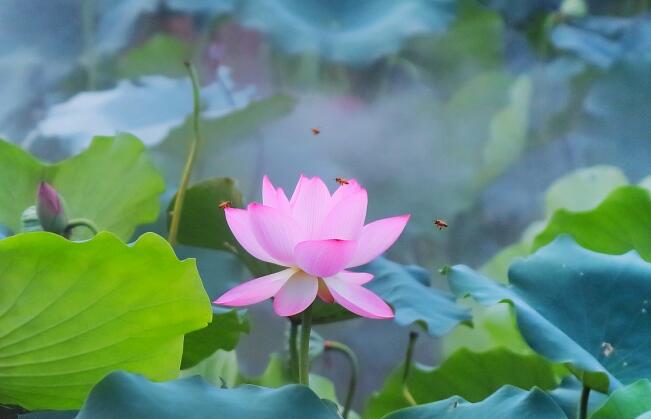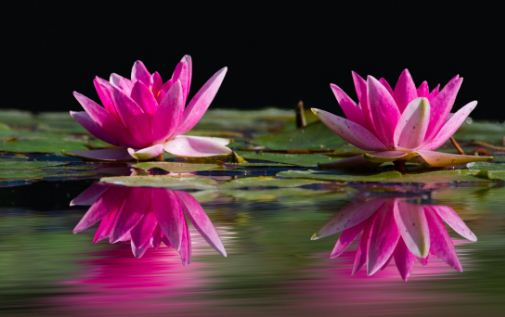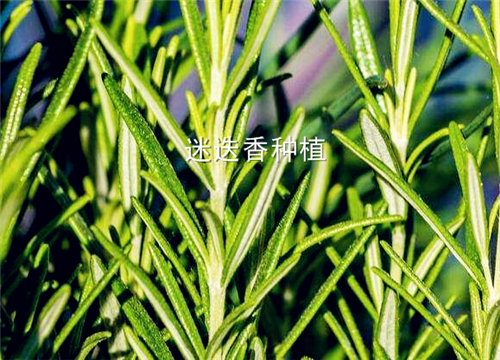How to plant lotus flowers in order to grow happily?
The lotus leaves are infinitely green, and the lotus flowers reflect the sun. That is our beautiful lotus. Lotus grows in water, and most parks will plant some for everyone to enjoy. Lotus root below can also eat. Lotus is a very good cash crop in flowers. The following small series will talk about the planting method of lotus, let's take a look together.

I. Site Selection
Lotus is a plant that grows in water. We need to choose to plant it in a pond. When planting, the water flow does not need to be too large, and the water level must be stable. When planting lotus, the requirements for water quality are not high. As long as it is not dirty water or seriously polluted water, lotus can be planted.
II. Conservation management
1, although the lotus water quality requirements are not high, but we must always pay attention to the changes in these waters, if there is a change in water quality, we need timely treatment to prevent lotus necrosis, and finally affect our benefits.
2. While planting lotus flowers, we also need to remove the surrounding weeds in time. Don't let them affect the growth of lotus flowers. We can spray herbicides once a month, and remove the algae and water moss on the water surface.
3. When the lotus leaves grow to about five, we will carry out the first ploughing, and then we will carry out the ploughing every fifteen days, several times in succession, until the lotus roots fill the whole pond.
III. Water management
Lotus in the process of growth will also need different water, in the early growth of the water needs to be shallow, to grow to the middle of the water needs to be more, the later does not need too much water, the pond water only needs to be controlled within 1.5 meters can be
IV. Timely fertilization
1. Fertilization is a must when we grow lotus flowers. We can fertilize them once before planting, which can promote the growth of lotus flowers.
2. We can apply about 3,000 organic fertilizers to one mu of land, and apply some phosphorus and potassium fertilizers as base fertilizers in an appropriate amount. When applying fertilizers, we need to apply light fertilizers during the seedling period. We can apply 10 kilograms of nitrogen fertilizer and 30 kilograms of phosphorus and potassium fertilizer to each mu of land.
3. Heavy fertilization is required when flower buds grow out. 20 to 30 catties of nitrogen fertilizer and 70 catties of phosphorus and potassium fertilizer can be applied per mu of land. When lotus flowers bear fruit, fertilizer should be applied frequently, and topdressing should be carried out once every half a month.
All right. The above is the planting method of lotus brought to you by the small series of soil flow net. I don't know if you have learned it. I hope my article can help you. We'll see you next time.
Is the arrow poisonous?
Is the arrow poisonous? Ling Jian lotus has a certain cold resistance, a wide variety, colorful and gorgeous! Lotus flowers bloom in midsummer, beautiful and gratifying! Is the arrow poisonous? Small series through the article to introduce the next arrow lotus poisonous information introduction!
Is the arrow poisonous?
The answer is no poison! Lotus stem flat lanceolate, shaped like an arrow, flowers like water lily, so the name of the arrow lotus. The trees are fruticose, ca. 50 - 100 cm tall. Likes the sunlight and the ventilated good environment, but under the hot, the high temperature, the dry condition wants the appropriate shade, fears the rain. Fertile, loose and well-drained soil is required, with certain drought resistance. Mexico is the most native, and our country is dominated by potted plants. There are many varieties of flower colors and colorful flowers.
Method for cultivating arrowhead lotus
Generally speaking, the lotus flowers are mostly potted plants, here we can use the cuttage method. In early spring, in March and April, we cut off a section of the stem of the lotus flower as a cutting ear, and then insert the bottom third into the thin sand prepared in advance. Spray water properly every day, and it will take root almost for a month in a row; Grafting method can also be used. The grafting method of lotus flower is generally cutting. We first choose a cactus with good growth as rootstock, then cut it with a knife, and insert the stem strip of lotus flower in the knife edge. It is best to insert it tightly, and then tie the interface with wet cloth strips. After the interface grows slowly, you can loosen the wet cloth strips.
The good growth of the arrow lotus is inseparable from our usual maintenance work on it. The arrow lotus is a kind of plant that likes light but is not cold-resistant, so we should let it receive more sunlight at ordinary times, but it should be noted that although it likes light but is afraid of sun, summer shading work is still necessary, if we raise the arrow lotus only long leaves do not bloom, then it is likely to be caused by insufficient sunshine.
During the growth period of Lingjian lotus, our fertilizer and water care work must be in place. On average, liquid fertilizer or thin fertilizer should be applied once every half month. If the plant is found to be pregnant, phosphate fertilizer should be applied once to promote the big flowers and beautiful flowers of Lingjian lotus. Fertilization should pay attention to if the fertilizer water is too sufficient, then many small lateral buds will grow on the stem, at this time do not feel bad, the sooner these lateral buds will be erased, the better, otherwise it is easy to rob the nutrients of the main flower stem, and the lateral buds will also affect the overall appearance after growing up. Remember to water after fertilization. Fertilizer diluted by water is more conducive to the absorption of rhizomes. Usually watering half dry half wet can, lest ponding rotten roots. When the weather is dry, you can spray some water on the stems of the lotus flowers alone. In winter, water and fertilizer can be avoided.
In addition, the best breeding temperature of the arrow lotus is 15 degrees, a little lower or a little higher. If it is too high or too low, it will affect its growth. It will not grow a lot of abnormal stems, or the pregnant buds will be frozen to death. Therefore, the temperature should be controlled as much as possible. Finally, if you are raising arrows and lotus flowers indoors, you should also ensure the circulation of indoor air.
Lotus without poison, like flowers, flower friends, you can boldly try to raise some lotus, edify sentiment, looking at the mood is also good. Is the arrow lotus poisonous? The answer is definitely not poisonous! Anyone who understands the growth habits of the order arrow lotus knows! Order arrow lotus is not poisonous, for everyone to popularize the basic knowledge of flower cultivation!
A few points to experience the summer of the arrow lotus A few points to experience the summer of the arrow, raise the arrow for several years, but the self-feeling is not very good, especially in summer maintenance difficulties, often spring growth is gratifying, to the summer leaves are dehydrated dry, soft listless, autumn recovery growth is very slow, seriously affecting the next year flowering, serious autumn can not restore vitality, but further dry into paper, want to save has been very difficult. The main reason is excessive concern, the so-called "love is adequate to harm" also. This year to improve some methods, some effects, leaves less water loss, very stiff, it is estimated that autumn will soon begin to grow. There are a few points of experience, mostly inspired by the practice of others, dare not be private, here to take out please like your friends to see the arrow. 1. Watering and spraying water This is one of my key improvements this year. In the past, books said that more watering and spraying could be done in summer, and some books said that watering should be controlled and spraying more water, but it seemed that it should be mastered in combination with temperature and ventilation. In fact, it was difficult to master it well. Summer, especially in the north, the highest temperature is often more than 30 degrees, and the temperature difference is small, the photosynthetic capacity of the arrow drops to a low point, and the need for water also decreases. At the same time, the root activity is insufficient, and more watering cannot be absorbed. The result can only be counterproductive, the root rot, and the leaves shrivel. Thinking back to the days when she lived in her hometown, the arrow floated high in the trees and stuck its root in the small tree hole. Although it rained a lot in summer, it never suffered flooding. Moreover, most importantly, she lived in her hometown for a long time, and how could she suffer from the heat here? My method is, keep moist enough, can not pour through. See dry, sprinkle some water a little, no longer care about her. As for the water spray, it was omitted at the same time. Summer muggy days, more water spray easily lead to leaf decay. Fertilization should stop at the end of May. Same reason as watering. It can't be absorbed. Fertilization is terrible. Fertilization is not expected to begin until the end of August. 3, ventilation water pouring more is not the most deadly, as long as the ventilation is good, the harm caused by more water will be greatly reduced. On the contrary, moderate watering and poor ventilation do not help. Therefore, as far as possible, the arrow will be natural ventilation, as a last resort, you can use a fan. All plants are native to nature, as far as possible to create their native natural environment, plants will grow well. Natural wind is irreplaceable. But watch out for the rain. Heavy rain, no matter how much sun, grass balls can not live. 4, the sun does not have to be too sheltered. As long as water is moderate and ventilation is maintained, a little more sun is no problem, and burns rarely occur even in very high temperatures. My two pots of arrows have been in the east window, there are about 3 or 4 hours of sunshine every day, there are several seedlings in the south window, it seems that they are not affected by the strong sunshine. Yes, the soil must be larger particles, more use of rotten leaf soil, which will be the dust sample sieve out, add cinder or broken brick or coarse sand, or add some of each.
- Prev

How much does a water lily cost? How to grow?
How much does a water lily seedling cost? The price of water lily seedlings is highly influenced by market factors, purchase quantity and purchase channel. The general height is about 20cm 1. 8-2 Yuan/tree, the price of about 30cm in height is 2.5-3 yuan/tree
- Next

How do you grow rosemary? What are the planting prospects for 2019?
People's first impression of rosemary should be attributed to the songs sung by Jay Chou, one of which is named after rosemary. The rosemary we are going to talk about today is a plant. The extracts from its flowers and leaves can produce essential oil of rosemary and are widely used in medicine and food. Many farmers see the prospect of planting.
Related
- Fuxing push coffee new agricultural production and marketing class: lack of small-scale processing plants
- Jujube rice field leisure farm deep ploughing Yilan for five years to create a space for organic food and play
- Nongyu Farm-A trial of organic papaya for brave women with advanced technology
- Four points for attention in the prevention and control of diseases and insect pests of edible fungi
- How to add nutrient solution to Edible Fungi
- Is there any good way to control edible fungus mites?
- Open Inoculation Technology of Edible Fungi
- Is there any clever way to use fertilizer for edible fungus in winter?
- What agents are used to kill the pathogens of edible fungi in the mushroom shed?
- Rapid drying of Edible Fungi

